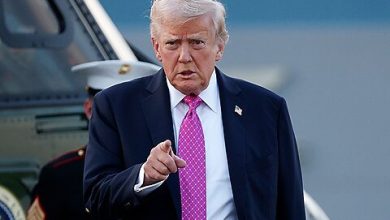SCOTUS Jawboning Decision Proof of Why We Need Transparency into Government Demands of Private Companies

The Supreme Court decided the Murthy v. Missouri case by declaring that those suing the government lacked standing. I’ll let lawyers unpack what this means for standing in First Amendment jurisprudence, but for policymakers, the decision shows that we desperately need transparency into the ways that our government is communicating with private companies.
For those who haven’t been following this case closely, Murthy v. Missouri— previously known as Missouri v. Biden— centered around claims by several social media users and state governments that federal actors and agencies were pressuring social media companies into removing the First Amendment–protected speech of the users. These users and governments point to various revelations via the Twitter files, congressional investigations, and legal discovery that showed that the government was frequently communicating with social media companies in a variety of ways.
The most egregious of these communications were instances of White House officials swearing at social media companies for their perceived inaction on government requests. In another instance, a Biden administration official seemed to issue a veiled threat against Facebook, stating that the White House has “been considering our options on what to do about [Facebook’s supposed lack of transparency about its vaccine misinformation problems].”
From internal company emails, we see evidence that social media companies interpreted many of these communications as threats. Meta’s senior leadership acknowledged that it had compromised its standards “due to pressure from an administration” and that it needed to change its policies to stay on the Biden administration’s good side given it had “bigger fish to fry.” YouTube officials similarly indicated they felt the need to keep the Biden administration happy since they wanted “to work closely with the administration on multiple policy fronts.”
A lot of the other communication between the government and social media companies, though, were far less aggressive. In many cases, government actors were flagging content for social media companies to review under their content policies. In other cases, social media companies were asking the government for information about a current event or issue. However, the Court found that the individuals and state governments could not bring the case based on this evidence.
The Court rightly found the record to be messy and noted that “while the record reflects that the Government defendants played a role in at least some of the platforms’ moderation choices, the evidence indicates that the platforms had independent incentives to moderate content and often exercised their own judgment. The Fifth Circuit, by attributing every platform decision at least in part to the defendants, glossed over complexities in the evidence.” This conclusion acknowledges that the government was involved in some of the platforms’ decisions and that the platforms often—but not always—exercised their own judgment.
I and others have argued that the Court should have at least condemned the most clearly unacceptable intrusions of government power that denied social media platforms their right to exercise their own judgment in all cases. But drawing a perfect legal line that prevents all government abuse and also permits the acceptable forms of communication between the government and private actors is as difficult as this record is messy.
Instead, this decision proves that we need radical transparency into the demands being made by government officials of private companies. When government actors can behind closed doors pressure private companies to silence the speech of its users, those users will have a hard time ever knowing that they were censored and establishing standing in the courts. This pressure may be veiled or vague and it may exist amid a lot of more permissible government speech like in this case, but without transparency, we will almost never know when it occurs.
Cato experts have written about what such a transparency policy should look like. Government actors would be required to report any request they make that seeks to have private actors limit or deny services based on First Amendment–protected speech. These reports would be collected by the Office of Management and Budget and made public, save for exceptions for privacy and security already found in the Freedom of Information Act and the Privacy Act. Such a scheme would be best put in place by Congress but could even be implemented via executive order.
Notably, this goes beyond just social media companies as the Supreme Court’s other recent jawboning case—NRA v. Vullo—shows that governments can coerce all sorts of private actors, including banks and financial institutions. In that case, the jawboning was far clearer as the New York insurance regulator explicitly told insurance companies that they would be held liable for providing insurance to gun rights organizations, which resulted in insurance companies dropping the NRA.
This government transparency proposal would drag censorial government demands into the sunlight. It would provide Congress with the evidence it needs to act as a further curb on executive abuse and give potential victims of government jawboning the proof they need to establish standing in the courts.
It’s also worth noting that this sort of transparency is focused on forcing the government to show its demands. This is very different than other tech transparency proposals that would force companies to prove that they are being fair or viewpoint neutral or taking “hate speech” seriously. If anything, such proposals are just ways to paint social media companies in a bad light that lawmakers can then use to jawbone those companies into doing what they want.
The decision in Murthy v. Missouri shouldn’t be read as support for government censorship but as a recognition that First Amendment litigation in response to pressure rather than more blatant censorship may not be sufficient to stop the government’s invidious actions. Still such actions should raise significant concerns regardless of the administration or intentions behind them. It now falls to policymakers in Congress and the executive branch to consider the ways they might commit to government transparency so that all Americans, regardless of administration, can be secure in their right to free expression without fears that the government will dictate decisions around what speech private companies may allow.





